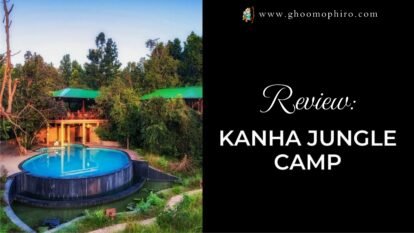Har ki Dun (6N/7D)
Posted on April 25, 2019

Pricing : 12,000/- [Dehradun – Dehradun]
Detailed Itinerary
Day 1: Dehradun to Sankri drive 7-8 hours’ drive 187 km
We start the journey early from Dehradun and drive initially to the famous hill station of Mussoorie. After just over 100 km, we pass close to the temple of Lakhamandal. According to locals, Duryodhana of the epic Mahabharata conspired to burn the Lakshagriha house of the Pandavas in this area. Damta, Purola, Mori and Netwar are some of the other villages on the route. We follow the river Yamuna upstream. The river Kamal Ganga merges with Yamuna near Naugaon and accompanies us till Purola. Purola is the last big settlement on the route with a large market. So, it is recommended that the trekkers can buy anything they might have missed out by Purola itself. It also is the last village where most of the mobile networks work.
The drive after Purola is through a beautiful forest of pine trees. In some distance, on top of a hill we can see the Jawahar Navodaya Vidyalaya overlooking the valley. From near the village of Mori, the river Tons flows beside us till about Netwar. The fall in temperature can be felt from here. We officially enter Govind Pashu Vihar Wildlife Sanctuary after we cross a check post at Netwar. It can be considered the southern gateway to the sanctuary as most of the treks across the region are accessed from here onwards. The northern border of the sanctuary merges into Himachal Pradesh. Close to here, the rivers of Rupin and Supin merge to form Tons, which is the largest tributary of Yamuna and in fact larger than Yamuna itself, in terms of volume of flow. The peak of Kedarkantha can be seen from various points along the way from here.
We reach Sankri by early evening. It is a small village with a central market lined with a few shops. The village has numerous apple orchards which are harvested starting from late summer. The market area is new compared to the old village area, a part of which is known as ‘Saud’. The village also produces peach, apricots and potatoes. One can see the Swargarohini peak from here on a clear day. We rest at night in a guest house or in camps.
Day 2: Sankri to Seema (2,600 m) 1 hr drive 5-6 hours trek
Since, the journey is long, we start as early as we can in the morning. After breakfast we board an SUV and drive through a forest road. The drive is quite bumpy. The vehicle crosses one or two streams on the way. We reach Taluka in about an hour. It is a small village with a few shops and two Government guest houses. The trek commences from here on a stony path. The fragrance of cedar trees can be felt around Taluka. Sometimes during winters, or especially during periods with rather heavy spells of rain, the road to Taluka may be too dangerous for vehicles, as streams run across the road and thus one may be required to walk a stretch of around 8 km up to Taluka, albeit it is only occasional.
We walk close to the river Supin gushing through rapids. Under the shade of walnut, pine and cedar trees, the walk is quite pleasant. In autumn we can often find walnuts lying around. One must avoid touching the vegetation on the sides for there are Stinging Nettle plants here locally known as ‘Bichhu ghas’ which literally translates to ‘scorpion grass’. A slight touch can give us stinging sensation which lasts for about twenty to thirty minutes. This herb is also cooked as a vegetable and eaten. Often the passing villagers greet us on the way. High up above on the true left, we get to see the village of Datmer. It is lined by series of step farms. The farms have the bright red colored Cholai growing from late monsoon to early autumn.
The path crosses over a few streams which merge with Supin. After a few hours of walk the village of Gangad can be seen towards the left, across the river. It is possible to come across a yellow throated marten in the forests of this area. We can also find edible fruits of seabuckthorn. They are orange in color and grow in bunches. Also, known as ‘leh berries’, the juicy and sour fruits are a rich source of vitamin C. We continue our trek and soon, the quaint village of Osla unfolds itself. One comes across a small hut with a water mill on the right of the trail. Water mills use the power of streams to grind grains and are locally called ‘gharaats’. After less than an hour, we reach Seema which is a tiny settlement opposite to the river from Osla. We set camp here.
Day 3: Seema to Har ki Dun (3,510 m) (4-5 hrs Trek)
Osla is located on a sloping spur about a hundred meters above the river Supin. The landscape surrounding Osla is full of terraced farms. The colors of these lands differ in every season. The red farms of Cholai (Amaranth) look amazing and can be seen from late monsoon. Osla is the last village on the route to Har ki Dun. From Osla the trail gradually rises higher and the river can be seen far below. We come across a temple some distance below the trail towards the right. We pass through bushes of flowers like orchids, fleece flowers and sunflowers. The ascending path climbs high above the confluence of Supin river and the river from Ruinsara valley. From near this confluence, we get a view of the snow-clad peaks of Ruinsara valley including Black Peak, the highest peak in the region. A hidden and roaring waterfall is encountered a little ahead of this point after a short descend. There is a small tea shop beside the waterfall.
After traversing higher up along the true right of the river, we enter the final stretch which is inside a forest. The forest opens up into the main camping area of Har ki Dun, right beside the gurgling stream. This is a very panoramic spot in Har ki Dun located at the junction of two valleys, one originating from Jaundhar glacier and the other from beyond Hata glacier. Higher up towards the North we can spot the Forest Rest House, while the wood crafted GMVN guest house lies further up in the distance. The Har ki Dun peak stands tall right in front of us behind the Forest Rest House. Towards its left, Hata peak which is usually snow covered can be seen. The minor ridge to our right, lined with a few scattered Himalayan birch trees Bhojpatra separates us from the massive Har Ki Dun valley that goes up all the way to the base of Swargarohini Peak. The paper like bark of these trees was used in ancient times to write religious scriptures. If time permits, we can go for a short walk to near the guest house for a glimpse of the vast meadows and the Swargarohini peak.
Day 4: Explore Har ki Dun
We can choose to relax and soak in the environment or we have several trails as options.
The vast open meadows following the course of the Supin river can be explored. Further ahead of the meadows one can walk among the forests of Bhojpatra trees (Himalayan birch) or get a closer glimpse of the Jaundhar glacier and Swargarohini peak, for which we will have to head updwards the Har Ki Dun valley, towards the Swargaroini peak in the eastern direction. It is also possible to walk till the base of Swargarohini peak. Being a long journey for the day, it would require to carry along sufficient food supplies, water and some cloths to aid against an abrupt weather change. The first rays of the sun can be seen falling atop the Swargarohini peak.
One can visit the Marinda Tal, in the north, just 2-3 km away from Har ki Dun. The trail is gradually ascending here. It is a small lake formed by a huge boulder obstructing the river which flows down from the base of the Borasu Pass.
The little-known valley of Hata can be explored which lies in between the above two valleys in the North East direction. It also has some large meadows and a close view of the Hata glacier and Hata peak.
Day 5: Har ki Dun to Seema (2,600 m) 3 to 4 hours’ trek 10 km
The journey back to Seema is an easy walk. We take the very same route which we used to reach to Har Ki Dun. After the initial descent through the forest we trace back our way towards Kalkatidhar, the rather exposed section of the trek. On the route we come across a good view of the trail all the way to Osla and see the valley descend towards Taluka, around the curve of the ridge where the two streams comng from Har Ki Dun and Ruinsara respectively, converge. A little short of this intersection we can get a glimpse of a trail to our left marked by a sight of a bridge down over the stream. This trail goes to join the trail to Ruinsara lake and is rarely taken. After reaching Osla, one can roam about in the village, talk to locals and soak in the Garhwali culture. Again we can either set camp or stay with a local family.
Day 6: Seema to Sankri 4 to 5 hours’ trek: 14 km 1 hour drive
Early in the morning, we leave the settlement of Seema and trek till Taluka. The walk is downhill and hence takes lesser time than before. We walk to the true left of the River Supin until we finally arrive at Taluka, from where a vehicle takes us back to Sankri. We retire for the day in camp alongside the river or in a guest house in Sankri.
Day 7: Sankri to Dehradun 8 hours drive
The trek to Har ki Dun concludes today as we leave Sankri and reach Dehradun by late afternoon.
Inclusions
- Transport support from and to Dehradun: starting from pickup on day 1 to drop on day 7.
- Guide and cook fees.
- Rent for camping equipment.
- Forest entry charges.
- Porter and mule support to carry camping equipment. Please note that personal luggage can be carried by mules and/or porters on chargeable basis.
- All veg meals starting from day 1 dinner to day 7 breakfast.
- Tented accommodation throughout the trek.
Exclusions
- Transport to reach Dehradun from hometown.
- Personal expenses like tips, personal medicines, phone calls etc.
- Any transport support during the trek apart from what is included above.
- Accommodation in Dehradun.
- Personal luggage with mass not exceeding 12 kg per bag per person can be carried by porters/mules @ Rs 300 per day per bag. This amounts to a total of Rs 1,500/- per bag for all trekking days.
- For a nominal charge of Rs 300 per person per night, we can arrange for Homestay in the village of Osla on request. The amount goes directly to the local family hosting us.




